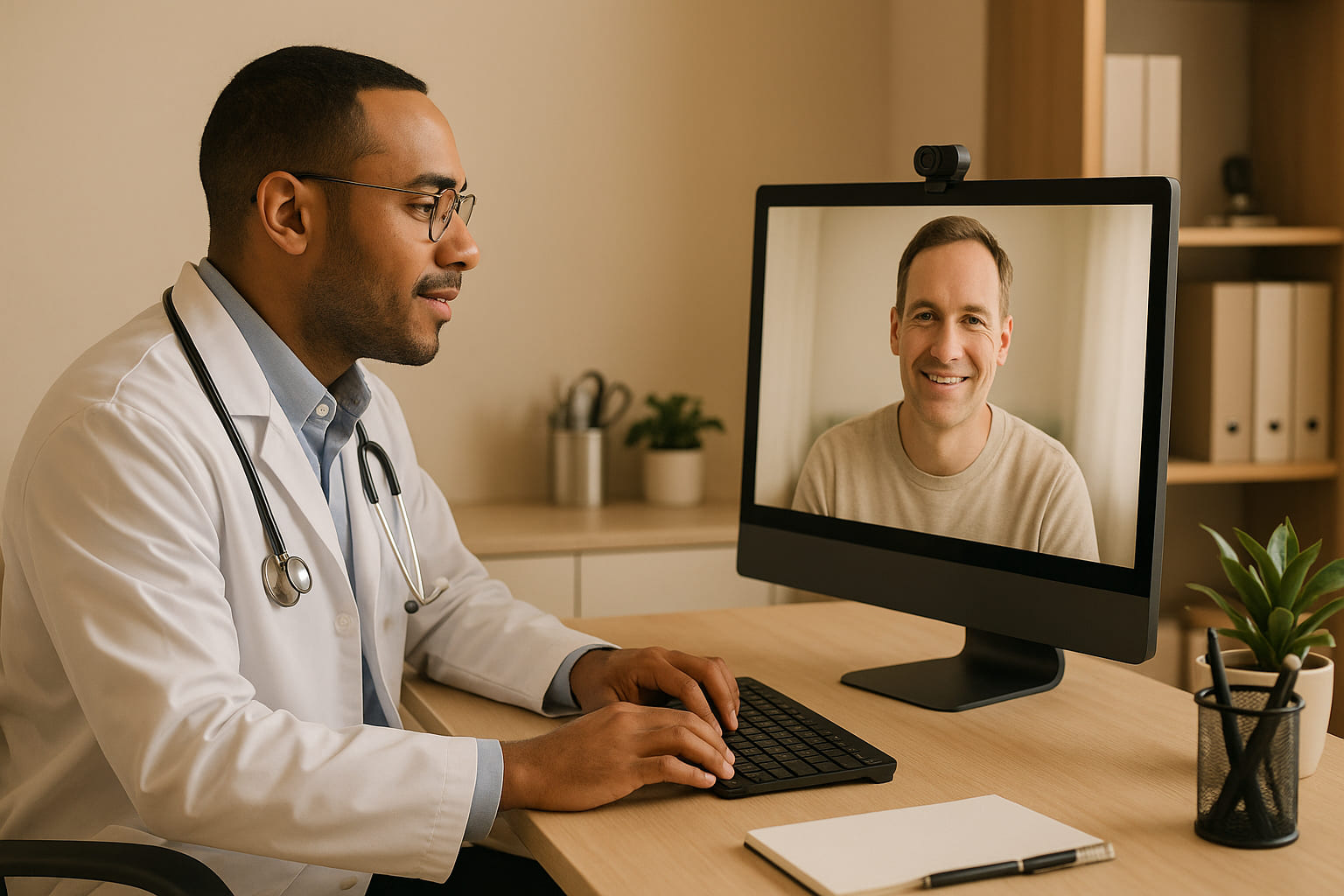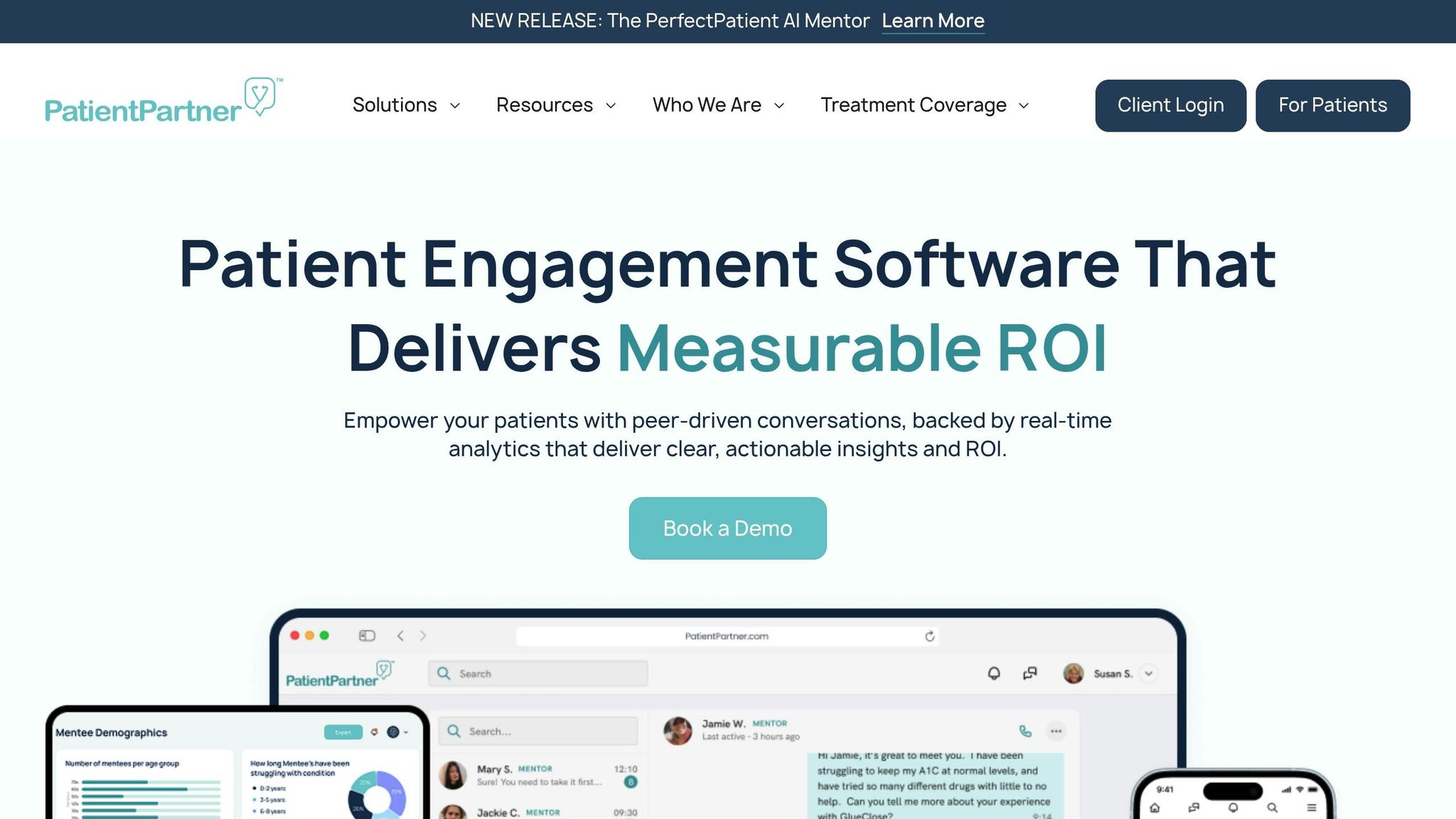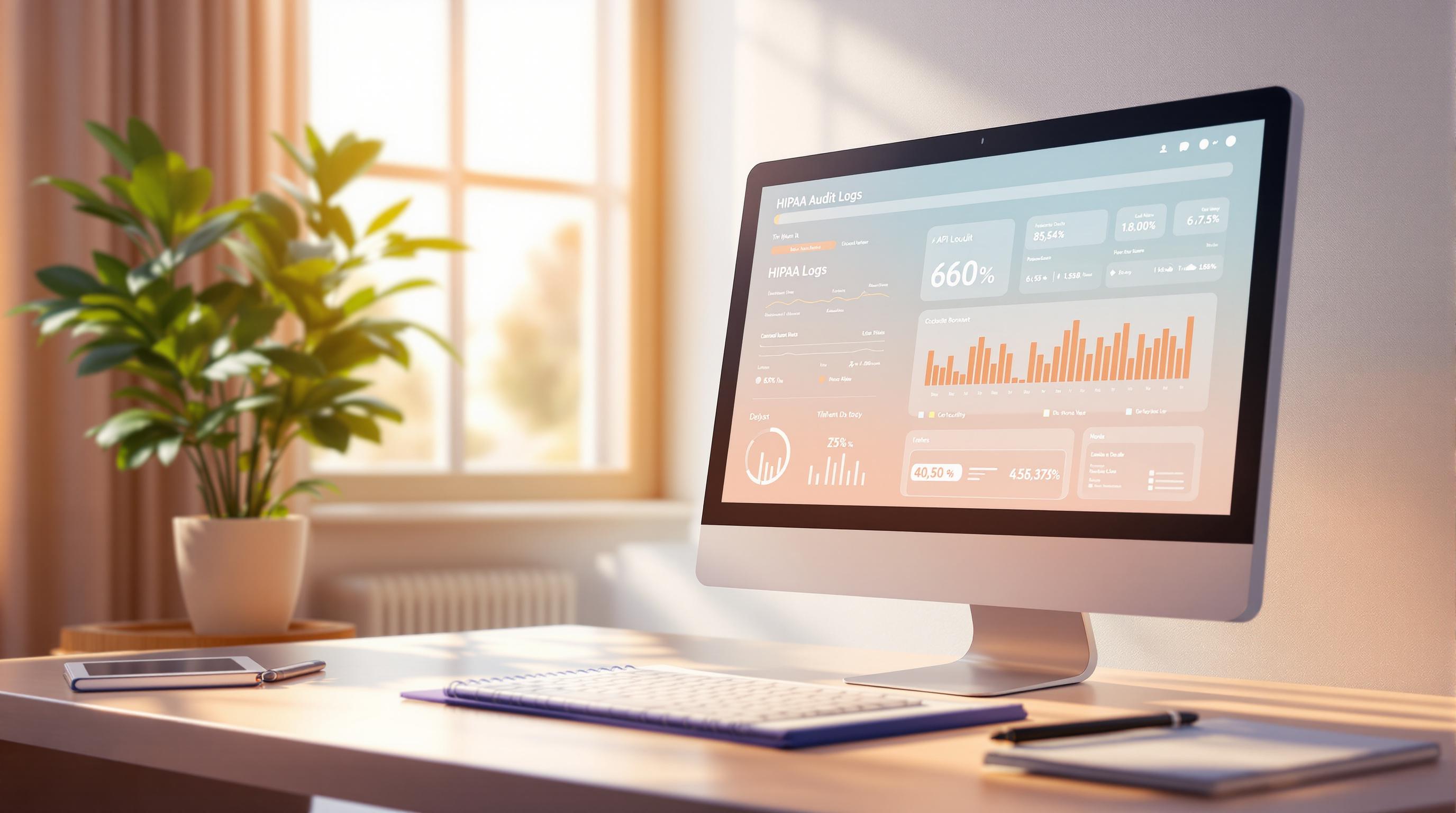HIPAA Rules for Real-Time Patient Engagement


Key Takeaways
HIPAA Rules for Real-Time Patient Engagement
Real-time patient engagement tools like live chat, secure messaging, and video consultations are transforming healthcare by improving communication and treatment adherence. However, they must comply with HIPAA to protect sensitive health information. Compliance involves three key rules:
- Privacy Rule: Limits access to patient data and ensures only the minimum necessary information is shared.
- Security Rule: Requires safeguards like encryption, secure authentication, and staff training to protect electronic health data.
- Breach Notification Rule: Mandates quick detection, reporting, and response to data breaches.
To ensure compliance, organizations should conduct risk analyses, use HIPAA-compliant tools, establish clear policies, and provide regular staff training. Platforms like PatientPartner demonstrate how secure engagement can improve patient outcomes, with statistics showing better treatment adherence and confidence in care decisions. Investing in secure tools and processes not only avoids penalties but also builds trust and enhances patient-provider relationships.
NEW HIPAA Compliant Texting Guidance - Avoid Audits and Penalties
Key HIPAA Requirements for Real-Time Engagement Tools
When it comes to real-time patient engagement, compliance with HIPAA is non-negotiable. Three key rules - Privacy, Security, and Breach Notification - form the backbone of protecting patient data. Each rule addresses specific aspects of safeguarding information, from who has access to how incidents are managed.
Privacy Rule
The Privacy Rule sets the groundwork for protecting protected health information (PHI) by establishing strict controls over who can access it and when it can be shared. This rule directly impacts real-time engagement platforms, requiring stringent measures to manage access and sharing of patient data.
Access to PHI is limited to authorized personnel and specific purposes, such as treatment, payment, or healthcare operations. For engagement tools, this means implementing robust access controls to ensure only the right people see the right information.
Another critical aspect is the minimum necessary standard, which dictates that only the smallest amount of PHI needed to complete a task should be used or disclosed. For instance, an appointment reminder should confirm the time and date but avoid mentioning sensitive medical details unless absolutely essential for patient care.
Additionally, organizations must obtain written patient consent and clearly communicate the risks of digital PHI transmission. This consent process establishes boundaries for how patient data will be used during real-time interactions.
Security Rule
The Security Rule zeroes in on electronic protected health information (ePHI), requiring organizations to implement safeguards across three areas: administrative, physical, and technical.
Technical safeguards are vital for securing real-time engagement platforms. Encryption should be applied to data both in transit and at rest. Secure authentication methods, like multifactor authentication, help prevent unauthorized access. Audit controls track who accessed what data and when, while automatic logoff features reduce the risk of unattended devices being exploited.
Administrative safeguards focus on the human side of security. Organizations must establish policies for training staff, managing access, and responding to incidents. Regular training ensures employees know how to prevent unauthorized disclosures during real-time interactions. Clear guidelines must define who has access to patient data and under what conditions.
Physical safeguards address the tangible elements of security. This includes securing devices and workspaces where ePHI is accessed. For example, private spaces should be used for virtual appointments, and computer screens should be positioned to avoid public view during patient interactions. Physical access to servers and workstations handling patient data must also be restricted.
Breach Notification Rule
The Breach Notification Rule outlines procedures for detecting, reporting, and responding to data breaches involving patient information. Real-time engagement tools must have systems in place to quickly identify unauthorized access or breaches.
Audit logs and real-time alerts are essential for spotting unusual activity. These tools enable organizations to act swiftly, which is critical for meeting the rule's notification requirements.
If a breach occurs, affected individuals, the U.S. Department of Health and Human Services (HHS), and, in some cases, the media must be notified within specific timeframes. Organizations need clear, documented procedures to investigate breaches, assess their scope, and carry out notifications promptly.
Beyond compliance, timely and transparent communication about breaches helps maintain patient trust. Demonstrating a commitment to protecting patient information - even in challenging situations - can make a significant difference. Having a well-prepared breach response plan can turn a potential disaster into a manageable situation.
Up next: Discover actionable steps to ensure HIPAA compliance in real-time engagement. Stay tuned for practical strategies in the following section.
Steps to Ensure HIPAA Compliance in Real-Time Engagement
Protecting patient data during real-time interactions is a critical responsibility for healthcare organizations. To achieve HIPAA compliance while maintaining effective communication, a structured approach is essential. Below are four key steps to help organizations safeguard patient information and meet regulatory standards.
Conduct a Risk Analysis
The first step toward HIPAA compliance is conducting a thorough risk analysis. This involves identifying all systems and processes that handle protected health information (PHI), pinpointing vulnerabilities, and assessing the potential risks and impacts of data breaches.
Start by mapping how patient data moves through your engagement platforms. Document every point of collection, processing, storage, and transmission - whether through video calls, messaging systems, appointment reminders, or third-party integrations. Pay close attention to areas where encryption may be insufficient or entirely absent.
Review access controls to ensure only authorized personnel can view or handle patient data. Weaknesses like shared logins, outdated permissions, or inadequate authentication methods should be addressed. Also, consider physical security measures, such as ensuring devices are stored securely and maintaining privacy during virtual appointments.
Compile a list of common vulnerabilities, such as unencrypted data, weak authentication protocols, or outdated software, to guide your mitigation strategies. Once risks are clearly outlined, the focus shifts to selecting tools equipped to meet HIPAA's security standards.
Select HIPAA-Compliant Tools
Choosing the right technology is crucial for maintaining compliance. Look for platforms that provide end-to-end encryption, detailed audit logs, secure user authentication, and signed Business Associate Agreements (BAAs) with vendors.
Ensure the tools you select encrypt all forms of communication - video calls, messaging, and file transfers - and maintain audit logs that track every login, data access, and modification. These logs should be comprehensive enough to satisfy regulatory audits.
When evaluating vendors, request documentation of their security measures, compliance certifications, and breach response protocols. Platforms adhering to additional certifications, such as SOC 2 and ISO 27001, can provide added peace of mind.
Establish Policies and Training
Clear policies and robust training programs are essential for ensuring that staff understand their role in protecting patient data. Develop guidelines for handling PHI during real-time interactions, including secure communication practices, data access protocols, and breach response processes.
Adopt data minimization principles, collecting and using only the PHI necessary for patient care. For example, appointment reminders should confirm the time and date without including sensitive medical information unless required.
Train staff on HIPAA regulations, secure tool usage, and incident reporting procedures. Cover key topics like multifactor authentication, recognizing phishing attempts, and securing private spaces for virtual appointments. Provide practical tips, such as positioning screens to avoid exposing sensitive information during video calls.
Regular Security Updates
HIPAA compliance is not a one-time task - it requires continuous effort. Schedule regular software updates, perform security audits, and stay alert for new vulnerabilities. Update risk assessments annually or whenever significant changes occur.
Set up automated alerts for outdated software and establish clear procedures for applying security patches promptly. Use real-time alerts and log reviews to monitor engagement platforms for unusual activity, helping to catch potential security issues early.
Stay informed about new technologies, such as AI-driven chatbots, and their compliance considerations. Keep up with regulatory changes, like the ONC's 2024 proposed rules emphasizing multifactor authentication and updated certification criteria for health IT systems.
Regularly review compliance efforts, including vendor assessments, staff training, and technology evaluations, to ensure your real-time engagement tools remain secure and aligned with HIPAA requirements as your organization grows and evolves.
sbb-itb-8f61039
HIPAA Considerations for Patient Mentorship Platforms
When it comes to mentorship platforms, HIPAA compliance requires a more nuanced approach compared to standard patient engagement tools. Unlike traditional systems, mentorship programs foster ongoing relationships between patients and peer mentors, creating intricate data-sharing scenarios. These platforms must implement tailored safeguards to ensure that this model of peer support adheres to the strict privacy and security standards expected of real-time engagement tools.
Maintaining Confidentiality in Mentor-Patient Interactions
Mentorship programs bring unique privacy challenges since they involve sharing personal experiences between patients and non-clinical mentors. To address this, role-based access should be implemented to restrict mentors' access to only the information they need. For example, a mentor helping with medication adherence doesn’t require access to a patient’s full medical history or financial details.
Platforms should also enforce private settings for all virtual sessions. This ensures conversations remain confidential and that screens or discussions cannot be overheard or seen by unauthorized individuals. Such measures protect sensitive information while allowing mentors to provide effective support.
Data Minimization and Audit Trails
A key principle of HIPAA compliance is data minimization - sharing only the information necessary for effective peer support. For instance, if a patient seeks mentorship for managing diabetes, the platform should avoid collecting unrelated medical details or extensive family health histories unless they are directly relevant.
Notifications and reminders should also be designed with privacy in mind. Instead of referencing specific conditions, a compliant notification might simply state: "Your mentorship session with Sarah is scheduled for 2:00 PM today." This avoids disclosing unnecessary medical details.
Audit trails play a critical role in ensuring accountability. These logs should document every interaction with patient data, including timestamps, user identities, and any changes made to the information. Automated logging systems can track access points like logins, message exchanges, file downloads, and profile updates. By automating this process, platforms reduce reliance on user compliance while maintaining robust oversight.
How PatientPartner Ensures Compliance

"Compliance is at the core of everything we do. PatientPartner's platform is fully HIPAA and GDPR compliant, employing end-to-end encryption, role-based access controls, and audit trails to protect patient data. Our rigorous compliance framework ensures every interaction meets the highest regulatory standards, safeguarding both patient information and your organization's reputation."
PatientPartner exemplifies how mentorship platforms can navigate complex compliance challenges. The platform uses automated systems to monitor every interaction for HIPAA compliance and adheres to recognized security frameworks like SOC 2 and ISO 27001. These measures go beyond basic regulatory requirements, demonstrating a strong commitment to data protection.
Conclusion: Balancing Engagement and Compliance
Healthcare organizations can achieve a balance between real-time patient engagement and strict HIPAA safeguards by implementing key compliance strategies. Statistics show that patients who connect with mentors are 68% more likely to start prescribed treatments, feel 90% more confident in their care decisions, and remain on treatment for an average of 133.5 days longer.
The secret lies in choosing platforms that embed security measures into their core operations rather than treating compliance as an afterthought. For instance, organizations using PatientPartner have reported a 30% increase in treatment adoption rates and a 20% improvement in adherence within the first year.
With healthcare data breaches costing an average of $10.93 million in 2023, investing in HIPAA-compliant engagement tools is no longer optional - it’s a necessity for mitigating risks. Additionally, 80% of serious medical errors stem from miscommunication among caregivers, emphasizing the critical role of secure communication channels in protecting both patients and providers.
Real-world evidence underscores the benefits of these measures. Healthcare organizations that use encrypted messaging systems and secure patient portals have successfully increased patient engagement while maintaining full compliance with regulations.
"We knew patient trust was shifting, but seeing just how dramatically patients now prefer peer-to-peer engagement over traditional methods is a game-changer for our upcoming strategies."
– Sara W., Marketing Director | Rare Disease
Secure platforms like PatientPartner not only ensure compliance with rigorous standards such as HIPAA, SOC 2, and ISO 27001 but also enhance patient outcomes. This dual focus on security and engagement helps build trust, laying the groundwork for long-term success in healthcare.
Features like automated oversight, end-to-end encryption, and audit trails create a safe environment for patient interactions. Organizations that strike the right balance between compliance and engagement don’t just avoid penalties - they foster stronger patient relationships, achieve better outcomes, and drive sustainable growth.
FAQs
How can healthcare organizations ensure their real-time patient engagement tools comply with HIPAA regulations?
To maintain HIPAA compliance while using real-time patient engagement tools, healthcare organizations need to focus on strong security measures. This means encrypting patient data, relying on secure communication channels, and enforcing strict access controls to block unauthorized access.
Platforms such as PatientPartner, built with automated monitoring features, can play a key role in protecting patient privacy and ensuring HIPAA standards are met. On top of that, conducting regular audits and providing ongoing staff training on HIPAA guidelines are critical steps for staying compliant over the long term.
How does PatientPartner ensure HIPAA compliance while providing peer-to-peer patient mentorship?
PatientPartner takes patient privacy seriously by implementing strong security protocols and automated tools to guard sensitive health information. The platform complies with stringent privacy regulations like HIPAA, SOC 2, and ISO 27001, ensuring that all data shared during mentorship sessions is protected.
This commitment to security and privacy allows PatientPartner to offer a safe space where patients can confidently connect with mentors, enabling meaningful peer-to-peer support while staying fully compliant with industry standards.
Why should healthcare organizations prioritize HIPAA-compliant tools for real-time patient engagement, and what risks do they face if they don’t comply?
Healthcare organizations need to focus on using HIPAA-compliant tools to safeguard patient privacy and maintain trust. These elements are critical for creating strong, meaningful connections between patients and providers. Compliance not only protects sensitive health information but also upholds the integrity of these relationships.
Ignoring HIPAA regulations can lead to severe repercussions, including hefty fines, legal troubles, and damage to an organization’s reputation. Such setbacks can undermine patient trust and disrupt daily operations. By adopting secure, compliant solutions like PatientPartner, healthcare providers can enable real-time patient interactions while meeting strict privacy and security requirements. This approach helps enhance patient outcomes and encourages better adherence to care plans.
Author

Co-Founder and CEO of PatientPartner, a health technology platform that is creating a new type of patient experience for those going through surgery






